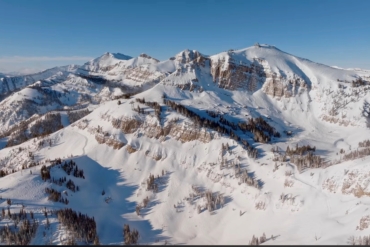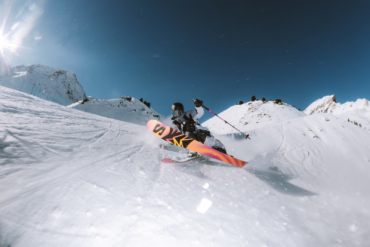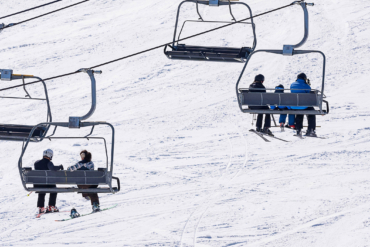The Weston Backcountry Riva Snowboard is a ladies’ freeride board built for stability while laying into big turns, facing variable snow, and accelerating down big slopes.
Based in Colorado, Weston Backcountry is an independent, grassroots ski and snowboard company that first marked the industry with splitboards and snowboards, backcountry education, and hosted community gatherings in 2012.
Season after season, the brand promoted access to safety and education through complimentary Splitboard 101 courses and Splitboard Meetups via retailers and breweries in Colorado and countrywide, followed by partnerships with local guide operations in 2018. They expanded in ski development, too.
Over the last decade, Weston Backcountry has received a collection of accolades including a 2016 TransWorld Tested and Approved tag and the 2018 top-rated board by Outside Magazine. By 2018, the brand also became the second-ranked splitboard manufacturer in the world and in Colorado, according to Snowsports Industries of America data, reported Vail Daily.
All things considered, we were pretty excited to test one of the brand’s most popular on-piste rides, the Riva snowboard.
In short: The women’s Riva is an all-mountain design that tackles inconsistent snow conditions and excels at speed on the groomers.

Weston Backcountry Riva Snowboard Specs
- Profile: Rocker on the tail and nose with camber in-between
- Shape: Tapered directional
- Flex: 7 (out of 10, which is the stiffest)
- Base: Sintered Durasurf 4001
- Core: 15% poplar, 80% paulownia, 3% bamboo, carbon stringers
- Construction: Wood core, Triax fiberglass
- Sidewall: Polyurethane (PU)
- Topsheet: Castor bean-based nylon
- Bolt pattern: 2×4
- Stance setback: 10 cm
- Sizes (cm): 143, 147, 151, 155
- Best for: Steep slopes, hard-packed groomers, speed

Weston Backcountry Riva Snowboard Review
I tested a 151 Riva ($599) during spring conditions at Crested Butte Mountain Resort, Colo., a ski area that is known for extremely steep slopes as well as rocky, variable terrain in addition to excellent powder days.
The snow included a range of light powder, chalky moguls, hardpacked chunder, icy patches, and a bit of soft corduroy. One checkbox we lacked was a deep pow day due to the dry conditions — so I’ll add more details once I get a chance to ride deep snow with this setup.
I took the board on a range of runs from moderate cruisers and difficult steeps to tight glades and mogul laps including through the mountain’s extreme terrain.
As for my background, I learned to ride at Telluride Ski Resort nearly 20 years ago, competed in Slopestyle, and then dabbled in backcountry snowboarding after taking my first AIARE 1 course, 12 years ago. I bought my first splitboard in 2016, and have several avalanche education certifications under my belt now.

Type
The Riva is marketed as a freeride snowboard with the ability to tackle terrain all over the mountain, and we agree.
In general, snowboards fall within these categories:
- Freestyle: Made to be playful, nimble, and poppy in the park and out of the park
- Freeride: Created to carve through ungroomed snow, directional and stiffer
- Powder: Developed for deep snow, typically setback binding inserts and a shaped nose and tail
- All-Mountain: Built to handle diverse terrain and conditions all over the mountain
With a stiffer, directional design, the Riva performs well through ungroomed snow but really craves high speed on hardpacked, chalked-up runs and corduroy.

Shape
The Riva is a directional shape, meaning the nose and the tail are unique silhouettes rather than mirrors of each other.
The nose is slightly larger to help improve float in powder: a 29cm width on the nose of the 151 length, and a 28.1cm-wide tail.
Overall, in those spring conditions — which were soft in some spots and rowdy-chop-town in others — I was happy to lead with my strongest foot forward and didn’t miss riding switch on this board, which is ideal for a directional design.
That shape also meant the board responded well to acceleration and charging with a tad more power placed in the front foot.

Profile
As with many conventional snowboards, the Riva strikes a balance between that traditional camber underfoot, meaning the board’s midmost section slightly arches above the snow, like a mellow rainbow, when lying flat (and unweighted).
Toward the very end of the board’s tail and nose, the profile is rockered, so it curves up slightly and off the snow like an upside-down banana.
The result is a board that feels easier to control at high speeds. This profile holds an edge extremely well, and you can transfer power edge to edge at higher speeds.
With that bit of rocker, the turn initiation isn’t as grabby or powerful as a strict camber board. That slight rocker is also supposed to help the board float better in powder.

Core Materials
The board has a 4000-series sintered base, which features higher-density materials, improved durability, and the porous material absorbs more wax. This type of base is faster, stronger, and lighter than an extruded base and is reflected in the price tag.
That higher-end base material also requires more maintenance with a frequent wax routine. Get your iron and bench setup for winter!
With a majority wood core made of paulownia, the board isn’t heavy and it does offer a bit of pop when it’s set up for it — but that spring doesn’t come easy like a more freestyle-oriented board.
Overall, the board’s higher stiffness allows it to charge through a variable snowpack, which it does better at higher speeds. The rigidity is enabled by the bamboo, carbon stringers, and stitched fiberglass for responsiveness.

Sidecut
The sidecut is progressive and moderate on this board. The 151 has a deeper, tighter curve in the center with a 7.6m-7.3m sidecut, a 9.5 m on the tip, and an 8.6m cut on the tail.
A 7.3-7.8m sidecut radius is a good moderate radius for all-around riding, which checks out on the Riva.
The result is this board doesn’t aggressively grab you to initiate a turn or pull you into a super big turn. But once you’re leaning into that curve, the board holds a moderately deep arch well.

Specs for the 151 Length:
- Effective edge: 115 cm
- Sidecut radius: 9.5 m/7.6 m/7.3 m/8.6 m
- Waist width: 24.6 cm
- Tip/tail width (cm): 29 cm/28.1 cm
- Taper: 9 mm
- Weight: 5.83 lbs.
Each of the four board lengths features unique metrics. The 151 is ideal for riders in the range of 105-165 pounds, 64-68 inches tall, and up to a size 9 U.S. women’s boot.

Conclusion
As soon as I set off on my first run, I noticed that the Riva felt rigid but that I could trust it would hold an edge. The PU sidewalls do provide good damping. The board’s stiffness allows it to handle mixed snow from light powder to chalk and a small amount of ice chatter.
On steep hardpack runs and groomed corduroy, this board took off — it easily dug deep and loved speed. The board’s sidecut radius lends itself to moderately arched, sweeping turns, which was fun in warmer spring afternoon conditions at the mountain. (The mornings were usually cold, especially with freezing windchill.)
My warning is that if you make your way into really choppy snow or chunder, the board can feel unforgiving. At first, and especially in flat light conditions when I move more conservatively, I found the board tough to ride through big patches of chunks or deep or hardpacked moguls.
With bent knees (and a speed check before dicey snow), I was able to drive with more speed and the board performed better.
Not tailored to freestyle, the Riva is not the most responsive for an ollie and small jumps. But it does transfer energy when you load up, which I did around the mountain versus in the park.
I dabbled in some choppy moguls and trees but did not cut loose on full runs through tight glades with the spring snow conditions and this board’s stiffness. Honestly, I usually prefer a more nimble board for whipping through tight pines and deeper moguls.
As long as you like a stiffer board and have it sized appropriately (don’t go too long), this snowboard can handle trees and moguls fine — it just won’t be the most playful. I’d also dial back my speed in that terrain, as it’s not where the board shines.
Again, the area I missed testing this board was powder. But, with the bit of reversed camber at the tip and tail, the board should float slightly better without sacrificing control.
Ultimately, the women’s Riva snowboard is super stable for wide turns on smooth hardpack, freshly cut groomers, steep slopes, and even across mellower, smoother ice. It’s just not my favorite board for running across bigger ice chunks.
For riders looking for a solid, sturdy, dependable, well-constructed freeride snowboard for riding open runs and dabbling in other areas on the mountain, the Riva is a great pick.
Check Price at REI






